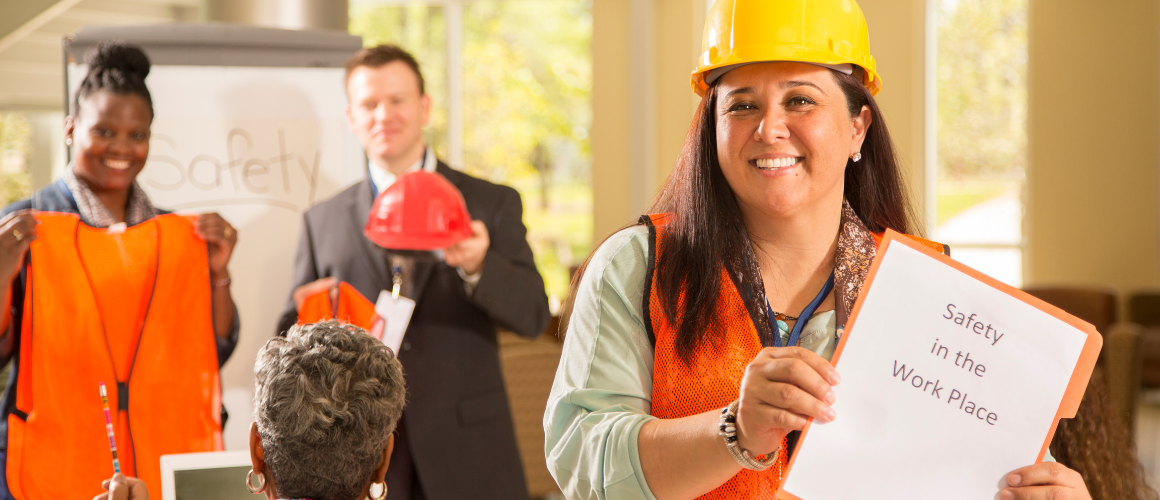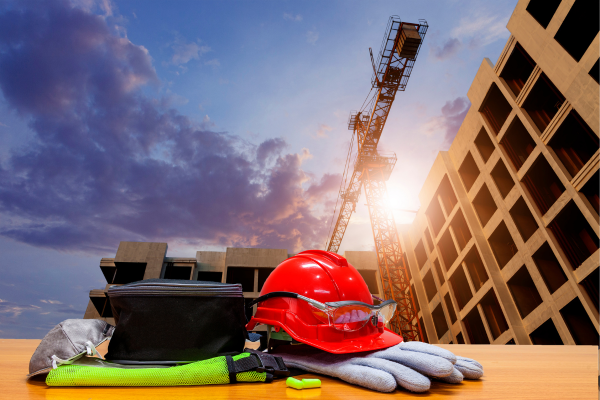
The New Era of Construction Safety Through BIM Innovation
Imagine stepping onto a construction site, where every beam, nail, and safety sign plays a part in creating something new. Here, the buzz of activity is constant, but so is the risk. Every year, thousands of workers face accidents, some of them fatal, turning construction sites into places where safety can't be an afterthought. Enter Building Information Modeling, or BIM. This isn't just technology; it's a game-changer for construction safety. BIM helps us see the unseen, anticipate risks before they happen, and plan better. It's like having a detailed map in an unknown city, guiding every step. With BIM, we're not just building; we're ensuring that everyone who builds with us can go home safely. This blog is about understanding that safety on construction sites is a priority and how BIM is leading the charge in making safety a fundamental part of the construction process. Let's dive in and explore how BIM transforms blueprints into a safer reality.
The construction world is bustling, a place where structures rise from the ground, day by day. But with progress comes peril. Imagine, every year, thousands of workers around the globe face accidents at these sites. The construction industry, known for its towering cranes and hard hats, also carries a weighty reality of risks, making it one of the more dangerous fields to work in.
A startling statistic from the International Labour Organisation hints at around 60,000 people losing their lives on construction sites annually. That's not just a number; it's families, friends, and communities affected by every single loss. In the U.S. alone, one in five workplace fatalities are in construction. The most common cause? Falls. But it's not just the heights that are a hazard. Inexperienced workers, often in their first year on the job, face a higher risk of accidents due to lack of training and familiarity with safety protocols.
This current state of safety—or the lack thereof—underscores an urgent need for change. Traditional methods of safety planning, while necessary, are proving insufficient against the dynamic and often unpredictable nature of construction sites. There's a gap between knowing the risks and effectively preventing them, a gap that technology, specifically BIM, is poised to fill. As we move forward, it's clear that improving safety isn't just about following rules; it's about creating an environment where every worker, regardless of their experience level, can rely on advanced tools and systems designed to protect them.
At its core, BIM (Building Information Modeling) is like a digital twin of a building, capturing every detail from the ground up. It's not just a tool for architects to design buildings; it's a way to weave safety into the very fabric of construction projects. Imagine being able to simulate a building’s construction in a virtual world, identifying potential hazards before they ever become real on the job site. That's the power of BIM.
Through BIM, everyone involved - from engineers to builders - can see the same detailed 3D model. This shared view helps in spotting where the risks might hide, from a simple trip hazard to more complex issues like structural clashes. It's about foreseeing and fixing problems before they even exist.

Moreover, BIM's magic lies in its ability to plan and predict. By mapping out every step of the construction process, BIM helps in managing the workflow in a way that keeps safety front and center. This level of coordination reduces the chances of accidents, ensuring that safety isn't just a checklist but an integral part of the building process.
In essence, BIM transforms the approach to construction safety from reactive to proactive. It’s a shift from fixing problems after they occur to preventing them in the first place, making construction sites not just places of productivity but also of safety.
Imagine walking into a construction site where safety isn't just hoped for; it's designed from the start. This isn't a dream. It's the real-world impact of BIM on construction safety. Take, for example, leading construction companies like Turner Construction and Skanska. These firms have harnessed BIM to foresee and eliminate safety hazards before they emerge. Turner Construction uses BIM for safety logistics, meticulously planning each phase of construction to minimize risks. Skanska leverages BIM for detailed planning, reducing the need for risky tasks like high elevation welding.
A standout example of BIM's impact is the construction of the U.S. Bank Stadium for the Minnesota Vikings. Over 8,000 workers contributed to this project, relying on a comprehensive 3D BIM model. This model didn't just outline where each beam would go; it anticipated potential safety issues, from structural clashes to logistical challenges. BIM enabled the team to visualize the entire construction process in advance, adjusting workflows to prevent overcrowded spaces and ensuring that cranes didn't cross paths dangerously.
Moreover, BIM's influence extends beyond planning. It enhances on-site safety through virtual reality training, allowing workers to familiarize themselves with the site and potential hazards without stepping foot on it. This virtual preparation means that when workers do enter the site, they're already equipped with the knowledge to navigate safely.
Through these examples, it's clear that BIM isn't just changing the way we build. It's revolutionizing how we think about construction safety. By integrating BIM into their processes, companies are not just building structures; they're building safer environments for everyone involved. This shift towards a proactive approach to safety, powered by digital innovation, marks a significant step forward in protecting the lives of construction workers.

The introduction of BIM into construction safety isn't just a step forward; it's a leap. The benefits are tangible and transformative. For starters, BIM brings an unparalleled clarity to construction projects. By visualizing every element of a build before it happens, BIM allows teams to identify and mitigate risks early on. This early detection system is crucial for preventing accidents and ensuring a smoother construction process.
Another key benefit is improved coordination. Construction sites are bustling places where misunderstandings can lead to mistakes. BIM acts as a universal language, aligning architects, engineers, and construction workers under a unified vision. This alignment drastically reduces the room for errors that can lead to safety incidents.
Furthermore, BIM paves the way for safer construction practices through prefabrication. Components are built offsite in controlled environments and then assembled on location. This not only speeds up the construction process but also minimizes the risks associated with on-site construction activities.
Virtual safety tours are yet another advantage. Before setting foot on site, workers can explore a virtual model, familiarizing themselves with the layout and potential hazards. This preparatory step is akin to a rehearsal for safety, equipping workers with the knowledge to navigate real-world scenarios more safely.
Lastly, BIM enables data-driven insights into accident analysis. By recording and analyzing incidents within the BIM framework, construction firms can unearth patterns and implement targeted improvements. This continuous loop of learning and improving makes construction sites not just workplaces, but centers for safety innovation.
In essence, BIM doesn't just change how buildings are constructed; it revolutionizes how safety is integrated into every phase of construction, making it a cornerstone of the industry's future.
Adopting BIM for construction safety, while beneficial, isn't without its challenges. The first hurdle is the steep learning curve. Transitioning to BIM requires a shift in mindset and operations, demanding training and time that many companies find daunting. It's not just about learning new software; it's about embracing a whole new way of working together.
Then there's the matter of cost. Initial investments in BIM technology can be significant, especially for smaller firms. The upfront costs of software, hardware, and training can make stakeholders hesitant. However, it's important to consider the long-term savings and safety improvements that BIM can bring, offsetting initial expenses over time.
Moreover, the full potential of BIM can only be realized when all parties involved in a project—architects, engineers, contractors—are on board and proficient in using the technology. This requires not just individual commitment but also a cultural shift within the industry towards more collaborative and integrated project delivery methods.
In essence, while the path to integrating BIM into construction safety practices presents challenges, the journey promises a safer and more efficient future. The obstacles are significant but not insurmountable, with education, investment, and industry-wide collaboration paving the way forward.
In wrapping up, it's clear that Building Information Modeling (BIM) holds the key to unlocking a new era of safety in construction. By integrating BIM into construction projects, we're not just building smarter; we're building safer. This journey towards safer construction sites is paved with challenges, from learning curves to initial costs, but the destination—a world where construction accidents are significantly reduced—is worth every effort. Let's embrace BIM, not as a tool of the future, but as the foundation of today's commitment to safety. Together, we can transform construction sites into environments where safety is built into every beam and blueprint. Let's build a future where every worker returns home safely, every day.